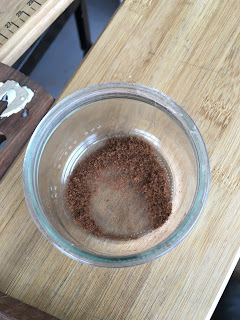Now that the Gouzouki project is finished, I thought it would be nice to compare guitar, bouzouki and gouzouki sounds. It’s not really a particularly fair comparison as it’s my really nice Martin guitar v my very cheap entry level bouzouki v my home built gouzouki, but it can shine a light on my rubbish playing if nothing else 😂.
The Gouzouki Project
Saturday, 3 October 2020
The Gouzouki Project - How it Sounds Compared to Guitar and Bouzouki
The Gouzouki Project - Final Set-up
Final set up! Now it’s time to turn those big lumps of Corian into a nut and bridge and set the height of the strings.
I installed the tuners permanently and added my label to the inside alongside Faith's!
Then, after marking out the string spacing, I lightly filed slots in the nut and bridge to locate the strings - you really need to use specific slotting files for this to get it right.These are horrifically expensive, but I couldn't think of a reliable way to get around using them.

The Gouzouki Project - Fret Levelling and Crowning
I reinstalled the neck at this stage (hopefully for the last time), which is a very easy task with this bolt on neck - 2 bolts accessed through the soundhole.
The frets need to lie in a level plane, so that the "action" can be set nice and low (making it easier to push strings against frets) but without allowing the strings to "buzz" against any high points further up the neck.
The Gouzouki Project - Modifying the Bridge










The Gouzouki Project - Finishing the Neck
The Gouzouki Project - Head Inlay
Does it get any more nerve wracking than drilling into your lovingly crafted neck?













The Gouzouki Project - How it Sounds Compared to Guitar and Bouzouki
Now that the Gouzouki project is finished, I thought it would be nice to compare guitar, bouzouki and gouzouki sounds. It’s not really a par...









































